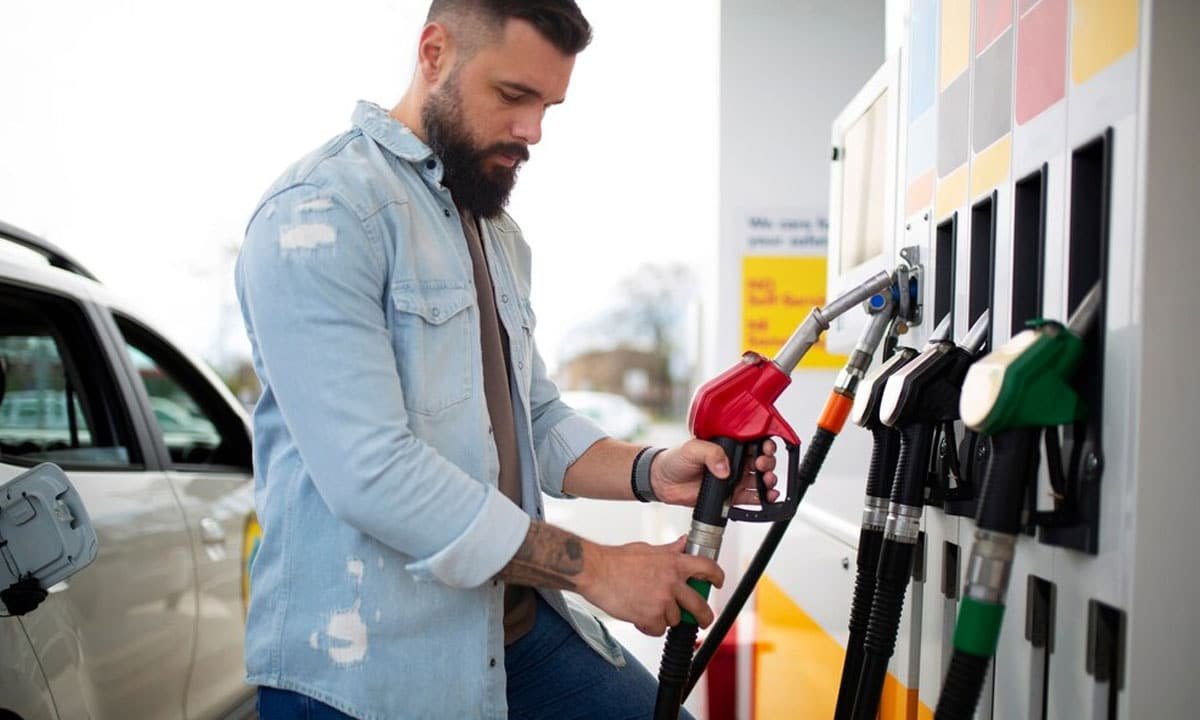Guide
How to Optimize Fuel Usage for Business Success
Published
1 year agoon
By
Admin
Fuel costs are a notable matter for businesses, especially those managing vehicle fleets. Whether you’re a fleet manager, truck driver, or business owner, optimising fuel usage is important for reducing costs and improving efficiency. Interested in learning how to optimise fuel usage? Keep reading! In this article, we’ll explore practical strategies to reduce fuel consumption and cut costs. Also, we’ll explain how fuel cards can help manage your fuel expenses more effectively. Let’s dive in!
Understanding Fuel Usage in Business
Fuel is one of the largest active costs for companies reliant on transportation. Fluctuating fuel prices and inefficient fuel usage can drain profits. For fleet-based businesses, fuel management isn’t just about cutting costs—it’s essential for staying competitive. Poor fuel management practices can lead to higher overheads, reduced profitability, and negative environmental impacts.
By optimising fuel consumption, businesses can improve productivity and gain greater control over financial planning. A well-organised fuel management system not only saves costs but is also an investment in long-term success.
Benefits of Fuel Optimisation
Fuel optimisation offers several benefits for businesses:
- Cost Efficiency: By reducing fuel wastage and making better decisions, businesses can save significantly on fuel costs.
- Operational Efficiency: With smarter fuel strategies, businesses can streamline their operations, leading to more reliable schedules and fewer unexpected fuel costs.
- Sustainability: Reducing fuel consumption also reduces a company’s carbon footprint. Many businesses are adopting greener practices to save costs and meet sustainability targets.
- Improved Budget Control: Tracking and optimising fuel use helps businesses forecast fuel expenses more accurately and allocate funds elsewhere.
Strategies to Optimise Fuel Usage
Now that we understand the importance of fuel optimisation, let’s look at useful strategies businesses can implement.
1. Route Optimisation
Efficient route planning can significantly reduce fuel consumption. Modern telematics systems allow businesses to track vehicles in real-time and plan the shortest, least congested routes. This minimises fuel usage and helps drivers reach destinations faster.
For example, if a driver takes a longer or congested route, more fuel is used. With the right planning tools, businesses can avoid unnecessary fuel wastage. Route optimisation is especially important for delivery fleets and services that rely on time-sensitive logistics.
2. Regular Vehicle Maintenance
Properly maintained vehicles use less fuel. Ensuring that tyres are inflated correctly, engines are well-tuned, and filters are clean ensures that vehicles run more efficiently. Regular checks and servicing keep the fleet in top condition and reduce fuel consumption.
Neglecting maintenance not only increases fuel usage but can also lead to costly repairs. A proactive maintenance schedule helps keep both costs and emissions under control.
3. Educating Drivers
Driver behaviour directly affects fuel consumption. Excessive idling, harsh acceleration, and sudden braking waste fuel. Providing training to drivers on fuel-efficient driving techniques can greatly reduce fuel costs.
Businesses can also introduce incentive programmes that reward drivers for maintaining fuel-efficient habits. Over time, these efforts can result in substantial savings across a fleet.
4. Utilising Telematics
Telematics systems provide real-time data on vehicle performance, fuel consumption, and driver behaviour. This allows businesses to monitor fuel use patterns and identify areas for improvement. Telematics also help drivers stick to optimal routes, speed limits, and fuel-efficient driving practices. By providing actionable data, telematics can support long-term fuel-saving strategies.
Role of Fuel Cards in Optimising Fuel Usage
One of the most effective tools for managing fuel expenses is the fuel card. Fuel cards allow businesses to track fuel purchases, streamline payments, and monitor fuel usage. For fleet-based businesses, fuel cards are a valuable asset.
How Fuel Cards Help:
- Simplified Payments: Fuel cards enable drivers to make payments at partnered petrol stations, eliminating the need for handling receipts or reimbursements. This ensures clear, documented transactions.
- Detailed Reports: Fuel cards provide detailed insights into how much fuel is used by each vehicle and where it’s purchased. These reports help businesses identify inefficiencies and optimise fuel usage.
- Discounts and Savings: Many fuel cards offer discounts at specific petrol stations, leading to significant savings, particularly for businesses with large fleets.
Choosing the Right Fuel Card
When selecting a fuel card, it’s important to choose one that meets your business’s needs. Consider factors such as network coverage, discounts, and reporting abilities. One such option is Radius.com, which offers a complete solution for businesses looking to optimise fuel use. With extensive UK coverage, savings on fuel, and real-time tracking, Radius fuel cards are a great choice for managing fleets. Moreover, their detailed reports make it easy to monitor and improve fuel efficiency.
Implementing a Fuel Management Programme
Once the strategies for fuel optimisation are identified, businesses should implement a structured fuel management programme. Here are a few steps to help you get started:
- Educate Drivers: Train drivers in fuel-efficient driving techniques, such as reducing idling and maintaining consistent speeds.
- Monitor Progress: Use telematics and fuel card data to monitor fuel usage regularly. Identify trends and adjust as needed.
- Refine Strategies: Fuel optimisation is an ongoing process. Continuously review strategies, adjust routes, and look for new ways to reduce fuel consumption.
Fuel Optimisation Success Story
A small logistics business recently implemented telematics, route optimisation, and fuel card usage. Within six months, they reduced their fuel costs by 20%. The real-time data from their telematics system helped them pinpoint inefficiencies in routes and driver habits. By using fuel cards, they also saved time on administrative tasks.
These fuel savings allowed the business to reinvest in its fleet and expand its operations, showing that effective fuel management leads to business growth.
Conclusion
Optimising fuel usage isn’t just about saving money. It’s about making your business more efficient, achieving goals, and staying ahead in today’s world. By using strategies like route planning, driver training, and regular vehicle maintenance, businesses can cut fuel consumption and boost performance. Start focusing on fuel efficiency today, and you’ll see the positive impact it can have on your business’s success. We hope you find this article helpful!


Why Companies Worldwide Are Hiring Power BI Developers

Experience Pure Android Gameplay with MuMuPlayer Emulator

A Guide To Solar PV For Homeowners

How to Convert a Historic Building into a Hotel: a 2025 Guide

How You Can Integrate AI into Your Small Business For Faster Growth

File Recovery on Android: Myths vs. Facts

Cooler, Safer, Clearer: Why Quality Window Tint Is a Smart Upgrade in 2025

How Medium-Sized Businesses Actually Handle Their Books

Best Travel Vacuum Bags: Pack More and Worry Less with Vacbird Storage Bags

Start Your Morning Right: The Real Benefits of Himalayan Pink Salt and Lemon Water

Carol Kirkwood’s Journey: Her Real Age, Husband, Career, and More

Revolutionizing Healthcare: The Emergence of AI-Driven Analytics

How Machine Learning and AI are Redefining the Future?

Aliza Barber: Meet Lance Barber’s Wife, Age, Life, Profile, Career and Net Worth

Evelyn Melendez: Jordan Knight’s Wife Bio, Marriage, Family, Career and Net Worth

Ilan Tobianah Biography: Family, Marriage, Lifestyle, Career and Net Worth

Who was Alice Marrow? Everything to Know About Ice-T’s and His Mother

King Von’s Autopsy Report: The Truth Behind the Tragic Death

Meet Otelia Cox: The Supportive Wife of Tony Cox – A True Fairy Tale Romance

Tea Leoni and Tim Daly Split – A Closer Look at Their Relationship and Breakup

Why Companies Worldwide Are Hiring Power BI Developers

Experience Pure Android Gameplay with MuMuPlayer Emulator

A Guide To Solar PV For Homeowners

How to Convert a Historic Building into a Hotel: a 2025 Guide

How You Can Integrate AI into Your Small Business For Faster Growth

File Recovery on Android: Myths vs. Facts

Cooler, Safer, Clearer: Why Quality Window Tint Is a Smart Upgrade in 2025

How Medium-Sized Businesses Actually Handle Their Books

Best Travel Vacuum Bags: Pack More and Worry Less with Vacbird Storage Bags

Start Your Morning Right: The Real Benefits of Himalayan Pink Salt and Lemon Water
Category
Trending
-

 News3 months ago
News3 months agoCarol Kirkwood’s Journey: Her Real Age, Husband, Career, and More
-

 Health2 years ago
Health2 years agoRevolutionizing Healthcare: The Emergence of AI-Driven Analytics
-

 Technology2 years ago
Technology2 years agoHow Machine Learning and AI are Redefining the Future?
-

 Celebrity2 years ago
Celebrity2 years agoAliza Barber: Meet Lance Barber’s Wife, Age, Life, Profile, Career and Net Worth


